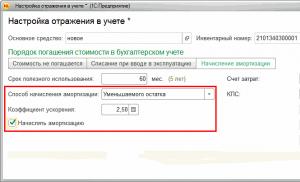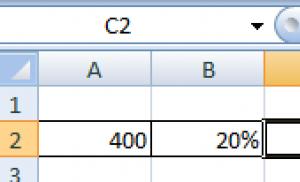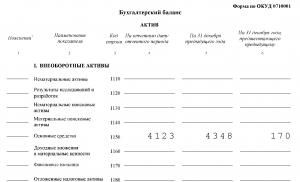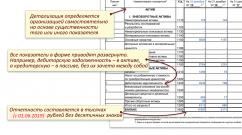Pest analysis by google. Determining the External Context with PEST Analysis
The external environment needs constant monitoring. This statement is true for businesses of all sizes. You can approach its description in different ways, but the most optimal is PEST analysis (or its other name STEP analysis). Since, the balance of the factors given in it covers almost all aspects of the life of any organization, both commercial and non-commercial.
You can meet the opinion that STEP analysis is more of a marketing tool, but we think that the factors taken into account in it are more relevant for strategic analysis. So let's list them:
pest analysis factors
Political factors
In this case, it is necessary to take into account elections, changes in laws, regulation of the state, changes in the vector of political development. Political relations between countries should not be discounted either.Economic forces
Inflation, exchange rates, key rate, and other macroeconomic parameters.Social factors
The attitude of the media, demographic indicators, various religious moods strongly influence, we add that it is social factors that can generally put an end to any businessTechnological factors
New technologies, inventions, patents. When analyzing these factors, one should pay attention to trends in the field of science (for example, it will be interesting to look through the files of scientific publications from the necessary departments of universities and institutes in a region or country).

drawing PEST analysis. click to enlarge.
enterprise PEST analysis example
Please note that the table is given in a very abbreviated version with changed names!
An example is given for the mentioned MK - the basis that produces and sells metal structures.
Factors affecting the enterprise. | Description of the current situation | Trends |
| Political | Due to the political situation, customers give preference to domestic manufacturers. The policy also affects personnel, the outflow of valuable specialists to the military-industrial complex plants increases.…… | A big trend is an increase in orders from the military-industrial complex, as large factories producing complex equipment are “loaded” for a long time and to deal with simple constructions, they have no time.……… |
| Economic | Tax incentives for small businesses are being introduced.……… | As in the political quadrant, we note a strong increase in orders from the military-industrial complex, and according to the plans of our government, this trend save.…… |
| Social | Consumers and especially individuals always emphasize that their choice is due to the fact that we are producers ourselves, and not just resellers.…… | The main trend that will affect the market for the next 10 years is increased loyalty to the domestic manufacturer.…… |
| Technological | There are new technologies for working with metal……… | The number of studies with metals from group X in the field of their properties during heat treatment will increase.…… |
For the best use of this tool, it is necessary to highlight trends over several years for each of the factors related to the enterprise under study. They can provide additional direction in developing a strategy.
conclusions
It has become fashionable to single out legal and environmental factors, some suggest considering geographic ones as well. Such an extension makes sense depending on the type of business. If an enterprise of the wholesale trade of book products is analyzed, then the environmental factor will not be as important as if a paper production plant was analyzed, with emissions of harmful production waste.
When you can apply individual techniques.
Discussion: 2 comments
The analysis is carried out according to the "factor - enterprise" scheme. The results of the analysis are drawn up in the form of a matrix, the subject of which are the factors of the macro environment, the predicate is the strength of their influence, assessed in points, ranks and other units of measurement. The results of the PEST analysis make it possible to assess the external economic situation in the sphere of production and commercial activities.
Lack of approval and misunderstanding. The lack of approval for conducting an environmental analysis arises from a lack of understanding by senior management of its value; difficulties to encourage line managers to participate in the analysis and use its results; resistance to changing forecasting methods.
PEST analysis is a strategic tool for analyzing the external environment of an enterprise, which provides the top manager with only the information that is important for decision making. The article contains a detailed algorithm and an example of such an analysis, which can be downloaded.
In this article you will learn:
PEST-analysis (pest, pest-analysis) is designed to give the head of a company, financial or other department that and only that information about the world that is important for decision-making and that has a direct and immediate impact on the company's operations.
What is PEST analysis and why is it needed
PEST-analysis is a strategic tool that classifies the influence of environmental factors surrounding a business into the following categories - politics (Political), economics (Economic), social (Social) and technological aspects (Technological features), the first letters of English terms form the abbreviation of the name of the method . Sometimes this analysis is supplemented by factors of a legal (Legal) and environmental (Ecological) character, and then the abbreviation of the method looks like PESTLE.
PEST not only identifies all significant environmental factors, but also analyzes the strength of their influence on the business, on the decision being made, on the project in whose interests the study is being conducted. The result is a tabular model in which all significant factors are reflected and classified, and for each of them an assessment of the strength of influence and the likelihood of a change is given.
PEST-analysis is used in assessing the current strategic status of a company, in developing and monitoring the implementation of a strategy, launching an investment project, entering new markets, etc.
With information about the most significant factors, a company leader or strategist is able to find and use opportunities that present themselves, as well as prepare for likely or inevitable negative events.
Categories of PEST Analysis
Now let's take a closer look at all the categories that must be taken into account in the analysis.
Politics (political factors)
Politics in our world has a huge impact on business:
- government spending that determines government contracts is the realm of politics,
- national development priorities, also run by politicians,
- taxes, education, science and so on - all these are industries that are keyly influenced by the policies of the ruling elites, the legal framework and other elements of the political sphere.
Political decisions on the world stage determine the mode of trade of the country's companies with others, states, trade unions and economic organizations, etc.
Unfortunately, such phenomena as wars, economic and political sanctions, genocide, discrimination based on ethnic, religious, sexual and other motives depend on politics.
Here is what can be attributed to the criteria for PEST analysis for a company in the category "Policy":
- Trade policy, which implies trade regimes with other countries, legal aspects of export / import, foreign exchange transactions.
- Existing legal framework for doing business within the country: rules, restrictions, institutions.
- Planned legal innovations: possible changes in the legislation on doing business in the country.
- The role of informal institutions: for example, the role of self-regulatory organizations.
- Current environmental regulations.
- Plans for the development of environmental legislation in the country.
- Local authorities in the regions where the company operates. In this section, I can highlight a lot of business-important components, the impact of which on the project and decision-making can be very significant and even critical:
- positions of the region and the governor in the ratings,
- relations between the regional authorities and the federal
- alignment of political forces;
- the role of power structures in the political and economic life of the region,
- informal political and economic structures of the region,
- decision-making processes in the power structures of the region,
- terms of the next elections of the governor, local parliament,
- terms of contracts of city managers, other key appointees, age limits.
In this context, the events on the merging of cities and districts of the Moscow region into urban districts are very interesting, which will have a very big impact on business in the region.
- Business support programs federal, regional and local, state subsidies.
- Wars, conflicts, areas of high crime background.
- Legislation and legislative initiatives regarding labor relations, this is especially true in light of the recently announced initiative of State Duma deputies to ban the dismissal of employees with a mortgage (see also).
Economy (economic factors)
In PEST analysis of economic factors, it is necessary to consider both short-term and long-term factors of the economy. They are all the more important when a company enters a new geographical market, another country, another region (read also about an example of a SWOT analysis ).
- The interest rate is an important factor when entering the market of another country, the company may well take advantage of the conditions of more favorable funding in the country where it plans to enter, or, on the contrary, provide for the need for funding from the parent company (see more about).
- The inflation rate is the most important indicator that has a significant impact on the financial model of the new division and the company as a whole, different levels of inflation should be taken into account in planning.
- The income of the population (can be measured, for example, with the help of income per capita), an important factor that determines the opportunities for business growth in the new region of the company's operation.
- Economic trends are different in every country or region, and what thrives in one region often does not feel as good in the next. This is all the more important when comparing the economies of countries.
- The exchange rate and its dynamics, as well as the inflation rate, affect the financial model of a new business and its place in the economy.
- Consumer preferences, preference features, consumer attitude to novelties, imported goods.
- Seasonal factors in the economy.
Social sphere
The community in which a project is to be implemented often plays a key role in its success:
- active opposition of society in the form of demonstrations and pickets may become the basis for a ban on your activities in the country or region,
- word of mouth and local media can shape public opinion and even demand for your company's services, availability of resources, quality staff.
What social factors are important to consider in the PEST analysis:
- Religion and related features and restrictions in society.
- Media influence.
- The level of xenophobia, attitude towards a different culture.
- The influence of language features on the use of the product, for example, the euphony of the name in the language of the country where the company goes with its product.
- The role of men and women in society.
- Demographic situation.
- Society's preferences for green technologies (from indifference to priority and prohibition of technologies that do not meet environmental standards).
- Target audience lifestyle.
- The status of education in society.
- Healthy lifestyle status.
- Income level and income stratification.
- Fashion trends.
- conspicuous consumption.
All this refers to social factors that must be taken into account when entering new markets and when forming a strategy for the company's products (read also). They form the company's consumer profile.
Technologies
Technological factors are a key element of the strategy, since the business has become based on technology in many matters from accounting to communication with customers. Technological solutions can give a company a powerful competitive advantage over other companies in the market, and, conversely, insufficient use of technology can cause a product to be uncompetitive in a new market.
- Free production capacity in the economy.
- The level of penetration of technologies and equipment in industries, we can talk about computerization, the use of 3D printers, and in Russia, where some production facilities are still equipped with equipment from the industrialization period of the 30s, the timing of the last capacity upgrade is important.
- The level of investment in technology in the country, in the industry.
- The level of support for technological development by the state.
- Practice of applying technologies in management and back office: KPI, advanced project management technologies, CRM, ERP, treasury, budgeting, accounting, HR automation, beyond budgeting methods, joint service centers, etc.
- Access to technology is relevant for Russia, where companies, as a result of sanctions, have lost the opportunity to attract Western technologies, for example, for oil production.
Technology is the main way for Russia to increase efficiency and, in addition, in the world of technology, competitiveness is the main factor. Therefore, when conducting a PEST analysis, technologies should be given great attention and not treated formally.
How to use PEST analysis when developing a strategy
PEST-analysis helps the CFO to understand what environmental factors can interfere with or, conversely, help to achieve the long-term goals set by shareholders. Look at examples of how to assess the impact of the external environment on the company's activities, as well as determine the likelihood of negative factors.
Step-by-step instructions for conducting a PEST analysis
The entire process of conducting a PEST analysis follows the following steps:
- Identification of factors that may influence the implementation of the company's plans. The easiest way is to select a limited number of the most significant factors from the proposed list of factors in each category (politics, economics, social sphere, technology) and use them for further analysis.
- Collection of information on the dynamics and nature of changes in each factor. This is the main work of the analyst, it is necessary to collect the optimal necessary maximum of information on each of them, so that the experts can form their opinion, which is necessary for the next step.
- Analysis of the significance and degree of influence of each factor. A structured questionnaire is being developed, in which experts enter their assessments of the significance of the factor for the result of the project, and the likelihood of its change.
Based on this questionnaire:
- the average value of the significance indicator for each factor is calculated;
- based on the average significance indicators, the weight of the factor is estimated relative to the sum of the significance indicators of all factors of all categories;
- the average probability of an event is estimated
- a synthetic indicator of assessing the influence and probability of a factor is the probability of an event multiplied by the weight of the significance of the factor.
- optionally, the quality of the influence of the factor on the results can be assessed: positive (+) or negative (-);
- compilation of a summary table of PEST analysis.
The summary table of the PEST analysis looks like this:
Table 1. Pivot table of PEST analysis
|
Weighting factor / Significance of the factor |
Direction of influence of the factor |
Average change probability score |
Weighted average score |
|
|
1. POLITICAL |
||||
|
2. ECONOMIC |
||||
|
3. SOCIAL |
||||
|
4. TECHNOLOGICAL |
||||
|
TOTAL |
An example of applying the PEST method
Formulation of the problem. Suppose our company is planning a project to open a home appliance store in a neighboring area. We must identify the factors that are essential for making a decision on the implementation of the project, calculate the degree of influence of these factors on the project, calculate the weight of each of them, then evaluate the likelihood of each factor changing. In the final table, it is necessary to present the weight of each factor, the probability of changing the factor, and an integral synthetic indicator that allows you to rank the factors by degree and probability. It is necessary to indicate what impact: positive or negative, this factor has on the project.
Isolation of environmental factors.
Political:
- Support for small businesses by local authorities.
- Corruption in the region.
- The activities of the tax inspectorate (in this case, tax inspections are considered as a political factor).
- The quality of the work of power structures.
- Organized crime.
Economic:
- Demand for technology.
- Rental rates.
- The level of salaries of employees.
- The level of competition.
- Retail lending.
Social:
- The level of income of the population.
- conspicuous consumption.
- Demographic composition of the population.
- Media development (audience coverage).
- Preference for western/local brands.
Technological:
- Availability of service centers.
- Availability of appliances (pcs/family).
- The quality of electrical networks.
- Transport companies.
These factors form the basis of the calculated and final tables (see table 1, table 2 and table 3).
Payment
The table of the results of expert surveys on the degree of influence of the identified factors on the project revenue is given below (Table 1)
Table 1. The degree of influence of factors
| Factors | Expert assessment (degree of influence) from 1 to 5 | average rating | Weight | ||||
| 1 expert | 2 expert | 3 expert | 4 expert | 5 expert | |||
| 1. POLITICAL | |||||||
| 2 | 3 | 2 | 3 | 2 | 2,4 | 0,03 | |
| Corruption in the region | 3 | 3 | 4 | 2 | 3 | 3 | 0,04 |
| 2 | 2 | 2 | 1 | 1 | 1,6 | 0,02 | |
| 4 | 3 | 3 | 3 | 4 | 3,4 | 0,05 | |
| Organized crime | 3 | 2 | 4 | 3 | 3 | 3 | 0,04 |
| 2. ECONOMIC | |||||||
| Demand for technology | 4 | 5 | 4 | 4 | 4 | 4,2 | 0,06 |
| rental rates | 3 | 4 | 4 | 3 | 5 | 3,8 | 0,06 |
| Salary level | 2 | 3 | 3 | 2 | 3 | 2,6 | 0,04 |
| Level of competition | 3 | 4 | 4 | 4 | 3 | 3,6 | 0,05 |
| Retail loans | 5 | 4 | 4 | 3 | 4 | 4 | 0,06 |
| 3. SOCIAL | |||||||
| Population income level | 5 | 5 | 4 | 4 | 5 | 4,6 | 0,07 |
| conspicuous consumption | 3 | 4 | 4 | 3 | 4 | 3,6 | 0,05 |
| 3 | 4 | 5 | 3 | 4 | 3,8 | 0,06 | |
| Media development (coverage) | 4 | 4 | 3 | 5 | 4 | 4 | 0,06 |
| 2 | 3 | 3 | 3 | 3 | 2,8 | 0,04 | |
| 4. TECHNOLOGICAL | |||||||
| Availability of service centers | 4 | 3 | 3 | 4 | 4 | 3,6 | 0,05 |
| 5 | 4 | 5 | 5 | 5 | 4,8 | 0,07 | |
| 3 | 4 | 3 | 4 | 4 | 3,6 | 0,05 | |
| The quality of electrical networks | 3 | 2 | 3 | 4 | 3 | 3 | 0,04 |
| Transport companies | 3 | 4 | 4 | 4 | 3 | 3,6 | 0,05 |
| TOTAL | 69 | ||||||
A table of the results of expert surveys on the likelihood of significant changes in factors is given in Table 2 below. The weight used for the assessment is taken from the previous calculation.
table 2. Probability factors
| Factors | Weight | Expert assessment (probability of change) from 1 to 5 | average rating | Weighted score | ||||
| 1 expert | 2 expert | 3 expert | 4 expert | 5 expert | ||||
| 1. POLITICAL | ||||||||
| Support for small businesses by local authorities | 0,03 | 1 | 1 | 2 | 1 | 1 | 1,2 | 0,04 |
| Corruption in the region | 0,04 | 1 | 2 | 1 | 2 | 1 | 1,4 | 0,06 |
| Activities of the tax office | 0,02 | 5 | 4 | 5 | 5 | 4 | 4,6 | 0,11 |
| The quality of work of law enforcement agencies | 0,05 | 2 | 3 | 2 | 3 | 2 | 2,4 | 0,12 |
| Organized crime | 0,04 | 1 | 1 | 1 | 1 | 1 | 1 | 0,04 |
| 2. ECONOMIC | ||||||||
| Demand for technology | 0,06 | 2 | 2 | 3 | 3 | 2 | 2,4 | 0,15 |
| rental rates | 0,06 | 4 | 4 | 4 | 5 | 3 | 4 | 0,22 |
| Salary level | 0,04 | 3 | 4 | 4 | 2 | 4 | 3,4 | 0,13 |
| Level of competition | 0,05 | 1 | 2 | 1 | 1 | 2 | 1,4 | 0,07 |
| Retail loans | 0,06 | 4 | 3 | 5 | 3 | 4 | 3,8 | 0,22 |
| 3. SOCIAL | ||||||||
| Population income level | 0,07 | 3 | 4 | 4 | 2 | 4 | 3,4 | 0,23 |
| conspicuous consumption | 0,05 | 1 | 1 | 1 | 1 | 1 | 1 | 0,05 |
| Demographic composition of the population | 0,06 | 1 | 1 | 1 | 1 | 1 | 1 | 0,06 |
| Media development (coverage) | 0,06 | 3 | 3 | 3 | 2 | 1 | 2,4 | 0,14 |
| Western/Local Brand Preferences | 0,04 | 2 | 1 | 1 | 2 | 2 | 1,6 | 0,06 |
| 4. TECHNOLOGICAL | ||||||||
| Availability of service centers | 0,05 | 1 | 2 | 1 | 2 | 2 | 1,6 | 0,08 |
| Availability of professional sellers of equipment | 0,07 | 2 | 3 | 4 | 4 | 4 | 3,4 | 0,24 |
| Availability of equipment (pcs/family) | 0,05 | 3 | 4 | 3 | 4 | 3 | 3,4 | 0,18 |
| The quality of electrical networks | 0,04 | 1 | 1 | 2 | 1 | 2 | 1,4 | 0,06 |
| Transport companies | 0,05 | 2 | 1 | 2 | 2 | 3 | 2 | 0,10 |
Table 3. Summary table of PEST analysis results
| Factors | Libra. Coeff / Significance of the factor | Direction of influence of the factor | Average change probability score | Weighted average score |
| 1. POLITICAL | ||||
| Support for small businesses by local authorities | 0,03 | + | 1,2 | 0,04 |
| Corruption in the region | 0,04 | - | 1,4 | 0,06 |
| Activities of the tax office | 0,02 | - | 4,6 | 0,11 |
| The quality of work of law enforcement agencies | 0,05 | + | 2,4 | 0,12 |
| Organized crime | 0,04 | - | 1 | 0,04 |
| 2. ECONOMIC | ||||
| Demand for technology | 0,06 | + | 2,4 | 0,15 |
| rental rates | 0,06 | - | 4 | 0,22 |
| Salary level | 0,04 | - | 3,4 | 0,13 |
| Level of competition | 0,05 | - | 1,4 | 0,07 |
| Retail loans | 0,06 | + | 3,8 | 0,22 |
| 3. SOCIAL | ||||
| Population income level | 0,07 | + | 3,4 | 0,23 |
| conspicuous consumption | 0,05 | + | 1 | 0,05 |
| Demographic composition of the population | 0,06 | +/- | 1 | 0,06 |
| Media Development | 0,06 | + | 2,4 | 0,14 |
| Western/Local Brand Preferences | 0,04 | +/- | 1,6 | 0,06 |
| 4. TECHNOLOGICAL | ||||
| Availability of service centers | 0,05 | + | 1,6 | 0,08 |
| Professional Technician Dealers | 0,07 | + | 3,4 | 0,24 |
| Availability of equipment | 0,05 | - | 3,4 | 0,18 |
| The quality of electrical networks | 0,04 | - | 1,4 | 0,06 |
| Transport companies | 0,05 | - | 2 | 0,10 |
| TOTAL | 1 | |||
Interpretation
To visualize the results of PEST analysis, a very handy tool is the radar chart, which clearly shows the most important factors for each category of PEST analysis.
The above diagram for the category “Political factors”, based on the analysis made, clearly shows that increased attention should be paid to the work of law enforcement agencies and interaction with the tax inspectorate.

As you can see, for the category "Economic factors" it is necessary to pay great attention to the factors "Retail lending" and "Rental rates", since, according to experts, they have a critical impact on the project's revenue.

An analysis of social factors revealed a critical dependence of project revenue on the income level of the population. Also, according to the analysis, media coverage plays an important role as a source of information for the population, which will need to be used to promote their products in the region.

Among the technological factors, the main ones turned out to be “Availability of professional sellers” and “Provision of equipment”, professional sellers are able, according to the expert, to ensure a positive trend in the revenue of a new project, and the saturation of the market with equipment will negatively affect sales if this issue is not given enough attention.
Conclusion based on the results of PEST analysis
According to the conducted PEST-analysis, special attention should be paid to the following factors (cut-off by the assessment level above 0.13) in descending order of significance:
- The presence of professional sellers of equipment.
- The level of income of the population.
- Rental rates.
- Retail lending.
- Demand for technology.
- Media development.
- Salary level.
These factors should be carefully researched, taken into account in the SWOT analysis, and a response program is developed for each of them.
PEST analysis (sometimes referred to as STEP) is a marketing tool designed to identify the political (Political), economic (Economic), social (Social) and technological (Technological) aspects of the external environment that affect the company's business.Politics is studied because it regulates power, which in turn determines the company's environment and the acquisition of key resources for its activities. The main reason for studying the economy is to create a picture of the distribution of resources at the state level, which is the most important condition for the activity of an enterprise. No less important consumer preferences are determined using the social component of PEST analysis. The last factor is the technological component. The purpose of his research is considered to be the identification of trends in technological development, which are often the causes of changes and market losses, as well as the emergence of new products.
PESTLE-analysis is an extended version of PEST-analysis by two factors (Legal and Environmental). Other formats are sometimes used, such as SLEPT analysis (plus legal factor) or STEEPLE analysis: Socio-demographic, technological, economic, environmental (natural), political, legal and ethnic factors. Geographic factors may also be taken into account.
PEST analysis entity
The analysis is carried out according to the "factor - enterprise" scheme. The results of the analysis are drawn up in the form of a matrix, the subject of which are the factors of the macro environment, the predicate is the strength of their influence, assessed in points, ranks and other units of measurement. The results of the PEST analysis make it possible to assess the external economic situation in the sphere of production and commercial activities.Given that PEST-analysis concerns external factors that affect the activities of the enterprise, it is customary to divide the external environment as follows:
Macroenvironment (government, economy, socio-demographic environment, scientific and technological progress, natural factors).
Microenvironment (suppliers, buyers, shareholders, competitors, creditors, trade unions).
Traditionally, PEST analysis deals exclusively with the study of the macro environment, which includes a fairly large number of factors, therefore, out of the total number, it is customary to consider only four key areas that have the most significant impact on the organization's activities:
Political factors (P): what opportunities and threats for business are created by the dynamics of the political situation; What are the main trends that could affect the company's operations?
- the state of the economy (E): what are the most significant expected developments in the economy and how does the economic situation affect business prospects?
- socio-cultural features (S): what are the features of the social, demographic, cultural properties that should be taken into account in the work?
- scientific and technical environment (T): to what extent the business depends on innovations and changes; how dynamic are the rates of scientific and technological progress in the industry; What is the share of the function in the activities of the enterprise?
Rice. 1. Components of a PEST analysis PEST analysis can be carried out both qualitatively and quantitatively. The general scheme for conducting a PEST analysis is presented below.
1. A list of macro-environmental factors with a high probability of implementation and impact is being developed.
2. The significance of each event for a given enterprise is assessed by assigning a certain weight to it.
3. An assessment is given of the degree of influence (both positive and negative) of each factor on the strategy of the enterprise.
4. Weighted scores are determined by multiplying the weight of the factor by the strength of its impact, and the total weighted score for the given company is calculated.
The total score indicates the degree of the company's readiness to respond to current and projected macro-environment factors.
When quantifying the assessment, it should be taken into account that:
The weighting factor should reflect the degree of probability of the event occurring;
- quantitative assessment of the influence of the factor should take both negative and positive values;
- the final assessment provides information on the extent to which the company depends on the macro environment, however, in addition to obtaining a summary assessment, it is necessary to analyze the contribution of each factor in obtaining the resulting value, as well as evaluate the interaction of factors.
Political Factors of PEST Analysis
The study of political factors in the framework of the PEST analysis is motivated by the fact that the government regulates the mechanism of circulation of money and other issues related to obtaining profit and the necessary resources.Purpose and objects of PEST analysis:
Understand the basic distribution mechanism.
Analysis of government stability.
The study of tax policy and legislation in the field of antimonopoly law, foreign economic legislation, laws on the protection of the natural environment, regulation of employment.
Understanding the state influence on the industry, its position in relation to foreign capital.
Have an idea of the intentions of public authorities regarding the development of society and the means by which it is supposed to implement their policies.
Examples of political factors
Elections at all levels
Legislative change
Joining various supranational structures
State regulation in the industry
State regulation
Economic Factors of PEST Analysis
Economic aspects are an important condition for business activity for most enterprises. These affect the population and its ability to pay. Using this information, you can predict demand, price levels, profitability. Therefore, the analysis of economic factors makes it possible to understand how economic resources are formed and distributed at the state level.Purpose and objects:
Gross national product trends.
Investment policy.
Level and inflation.
Interest rate and foreign exchange rate.
The price level and, in particular, the measurement of actual personal income and the total amount of money in circulation.
Energy prices.
Determination of the general level of economic development and market relations. The study of competition in the market.
Budget deficit, taxation norms.
Examples of economic factors
GDP dynamics
Inflation
Ruble exchange rate dynamics
Dynamics of the central bank rate.
Employment dynamics
Effective demand
Market and trading cycles
your enterprise
Enterprise energy costs
Enterprise raw material costs
Communication costs
Supplier price increase
Decreased purchasing power of consumers
Social Factors of PEST Analysis
Purpose and objects:To study the formation of consumer preferences, their change and possible demand, consumer activity.
- The demographic structure of the population, people and attitudes towards it.
- Lifestyle, customs and habits, people's attitude to work, social mobility of the population.
Examples of social factors
Changes in Core Values
Changes in style and standard of living
Attitude towards work and rest
Demographic changes
Religious factors
Media influence
Technological factors of PEST analysis
It is important to keep track of the dynamics of technological change, as there is a threat of losing the market if you are a little behind the existing trends. Analysis of the technological component of the macro environment allows timely adjustment to the production and sale of a technologically promising product, as well as timely abandonment of obsolete technologies used.Purpose and objects:
Protection of intellectual property;
Acquaintance with the state policy in the field of scientific and technical progress;
The influence of developments in other areas on the products and activities of the company.
Studying new technologies, scientific discoveries, new products, new patents that appear on the market.
Improvements in the necessary technical equipment and production processes, automation and methods of information processing.
Examples of technological factors
R&D trends
New patents
New products
Technology Development
PEST-analysis of the external environment
The external environment is a source that feeds the organization with the resources necessary to maintain its internal potential at the proper level. The organization is in a state of constant exchange with the external environment, thereby providing itself with the possibility of survival. But the resources of the external environment are not unlimited. And they are claimed by many other organizations that are in the same environment. Therefore, there is always the possibility that the organization will not be able to obtain the necessary resources from the external environment. This can weaken its potential and lead to many negative consequences for the organization. The task of strategic management is to ensure such an interaction of the organization with the environment that would allow it to maintain its potential at the level necessary to achieve its goals, and thus enable it to survive in the long term.The external environment is divided into:
Microenvironment - an environment of direct influence on the enterprise, which is created by suppliers of material and technical resources, consumers of products (services) of the enterprise, trade and marketing intermediaries, competitors, government agencies, financial and credit institutions, insurance companies;
- the macro-environment that affects the enterprise and its micro-environment. It includes the natural, demographic, scientific and technical, economic, environmental, political and international environment.
The enterprise must limit the negative impact of external factors that most significantly affect the results of its activities, or, conversely, make better use of favorable opportunities.
Factors of the external environment in the management system in management science, both at an earlier period and at the present time, have not been given enough attention. Consequently, the problem remains little studied, and especially its factors such as:
The value of the external environment for management;
definition of the external environment;
the relationship of environmental factors;
the complexity of the external environment;
mobility of the external environment;
uncertainty of the external environment;
direct exposure environment;
environment of indirect influence;
international environment.
Environmental factors are understood as the force with which changes in one factor affect other factors. Hence, it should be understood that when organizing management, it is necessary to take into account the factors of external influence as much as possible and consider a particular organization as an integral system consisting of mutually connected parts.
The external environment of the organization includes a list of elements, such as the consumer, competitors, government agencies, suppliers, financial institutions, technology, culture, demographics, relevant to the organization.
Assessment of the organization's external environment is a prerequisite for developing a strategy. Often external conditions change so unexpectedly that all preliminary plans are violated. The environment can be so unstable that the very development of long-term plans and strategies becomes meaningless.
Various methods are used for PEST analysis and forecasting the development of the macro environment:
Forecasting trends;
- scenario analysis;
- simulation modeling;
- ;
- expert methods.
The use of these methods is justified if there is a reliable information base.
The basis of PEST analysis is the collection of information about events occurring in the macro environment.
PEST parsing example
The following is an analysis of the external environment of enterprise X through PEST analysis.Politics |
Economy |
1. There is no specific government policy for our products. Lack of government support |
1. High total tax burden on the enterprise and the possibility of its strengthening |
2. The absence of unified state organizations involved in issuing various kinds of licenses, permits, etc. |
2. Growth of inflation rates. Rising prices for energy, raw materials, materials and transportation costs |
3. Exposure of decisions of enterprise managers to the opinion of higher management |
3. Lack of clear prospects for the development of the Russian economy. The danger of economic instability |
4. State (corruption) and criminal racketeering |
4. Lack of a documented and approved development strategy for Russia |
society |
Technology |
1. Influence of the factor of mobility of production |
1. Emphasis on computerization of the production process |
2. Influence of consumer preferences in accordance with quality standards |
2. Introduction of high-tech equipment |
3. Requirement of warranty obligations for manufactured products |
3. Use of advanced experience in the field of production of furnaces |
After determining the set of environmental factors for enterprise X, we summarize the assessment of the factors under consideration in the table
Significant environmental factors that may affect the activities of the enterprise |
Grade (on a 9-point scale) |
||
Now |
Across 3–5 years |
||
1. Political factors |
|||
There is no specific government policy for our products. Lack of government support |
|||
The absence of unified state organizations involved in issuing various kinds of licenses, permits, etc. |
|||
Exposure of the decisions of the company's managers to the opinion of higher management |
|||
State (corruption) and criminal racketeering |
|||
2. Economic factors |
|||
High total tax burden on the enterprise and the possibility of its strengthening |
|||
Rising inflation rates. Rising prices for energy, raw materials, materials and transportation costs |
|||
Lack of clear prospects for the development of the Russian economy. The danger of economic instability |
|||
Lack of a documented and approved development strategy for Russia |
|||
3. Social factors |
|||
Diversified Organizations: Organizations that operate across multiple or company lines create tremendous complexity for external analysts. To analyze the macroenvironment of these organizations, experts need to generalize the values for the dynamics of numerous macroenvironments of various states and organizations. The following main provisions of the PEST analysis can be distinguished: 1. The strategic analysis of each of the four indicated components should be sufficiently systematic, since all these components are closely and intricately interconnected; | |||
The name of this type of strategic analysis is an abbreviation:
PEST(STEP) analysis is a strategic analysis of social ( S- social), technological ( T– technological), economic ( E– economic), political ( R– political) factors of the external environment of the organization. It is used in the process of strategic planning and management of large companies, as well as for the purposes of assessing investment risks.When it comes to significant investment investments or making decisions about the company's future strategy, of course, it is necessary to understand that in the event of an unfavorable development of the situation, losses can be huge, up to a complete cessation of activity. Therefore, it is mandatory to analyze the changes that occur in the macro environment. The structure of the PEST analysis is given below:
Since the environment of the enterprise is directly affected by political factors, then as a result of the analysis, the factors of influence of the political situation on business activity, investment climate, stability and development prospects are determined.
Economic factor is studied as the main one for determining investment prospects and prospects for the development of markets, purchasing power, etc. The distribution of economic resources on a national scale is also being studied.
social factor determines the dynamics of consumer preferences, distribution and structure of social groups of the population, age and gender structure.
The last factor is technological component. The purpose of his research is considered to be the identification of trends in technological development, which are often the causes of changes and market losses, as well as the emergence of new products.
The analysis is carried out according to the "factor - enterprise" scheme. The results of the analysis are drawn up in the form of a matrix, the subject of which are the factors of the macro environment, the predicate is the strength of their influence, assessed in points, ranks and other units of measurement. results PEST analysis allow assessing the external economic situation in the sphere of production and commercial activities in the short term of several years.
It must be remembered that PEST analysis- it aerobatics strategic analysis. So pest analysis example, which is given below, rather demonstrates how not to do it, since it lacks analysis as such. In order to draw conclusions about trends that will manifest themselves in the economy, social environment, technology, etc., it is necessary to analyze large amounts of statistical and analytical information. And already on the basis of the initial statistical and analytical data, it is necessary to draw conclusions.
Development of PEST-analysis ideas
As a result of the fact that various analysts began to ask questions about why only four environmental factors should be subjected to detailed analysis, ideas arose to expand the boundaries of analysis and the list of factors. As a result, new abbreviations appeared:
SLEPT-analysis (legal factor is added to the analysis: L - L egal). This type of analysis is carried out by companies that operate in the field of strict state regulation of their activities. For them, a change in the conditions or procedures of work will lead to a significant increase or decrease in the profitability of the business. Therefore, close attention is paid to the dynamics of the legal aspects of activity.
PESTLE-analysis is augmented by two factors ( L egal and E nvironmental) version PEST-analysis. Analysis of the dynamics of changes in the environment will be important for organizations that extract or use natural resources. For example, for agriculture, it is necessary to analyze the dynamics of climate change. And for mining companies, state regulation in the field of environmental protection and the rules for the exploitation of subsoil will be important.
STEEPLE-analysis: Socio-demographic, technological, economic, environment (natural), political, legal and ethnic factors. Such analysis is carried out by transnational (international) companies. To conduct this type of strategic analysis of changes in the external environment of the corporation, whole groups of experts and analysts are involved. The organization and conduct of such a volume of analytical work is available only to very powerful (financially) organizations.
PEST analysis example
Dear Colleagues, the table I give below is just an example, and not a model of how it is necessary to carry out PEST analysis. This means that a separate research and analysis work is carried out for each line. That is, the real amount of information on this 40-50 pages, but not the table below, which can be considered as a kind of summary of the research.
|
Group of factors |
Factor |
Description |
|
(P) Political environment |
Legislation |
Over the past and current year, the legislative framework has undergone a number of significant changes, as a result of which the working conditions for business entities have changed significantly. The most important and significant of them, directly related to the business in question, should be considered the following:
However, based on this, it can be argued that in the next few years, at least until the next presidential election, the legislative framework will undergo only cosmetic changes. |
|
|
Regulation and restrictions of international trade |
WTO membership is a deterrent to any radical change, so no major change is expected. No changes are expected for the business in question either. |
|
|
State regulation of competition |
There is no government regulation in the industry under consideration |
|
(E) Economic factors |
The economic growth |
Presumably, the economy has already passed its lowest point of decline. Thus, it is possible to predict progressive growth in demand for the services provided over the next 3-5 years. This means that entering the market at the moment and gradually expanding its presence is extremely favorable. |
|
|
Interest rates and monetary policy |
The government traditionally restrains inflationary processes by maintaining high interest rates, periodically "sucking" the excess money supply from the market. Therefore, only a moderate reduction in lending rates should be expected, which, nevertheless, will remain relatively high. This factor will not have a significant impact on the business in question, due to the fact that the main resource is personnel |
|
|
Taxation and Tax Code |
The radical changes that have taken place in the taxation policy for 2011 suggest that during 2011 the tax legislation will be subject to a number of improvements and changes within the framework of the model proposed in the Tax Code. This factor is significant and the most uncertain for risk assessment |
|
(S)
|
Education |
The general downward trend in the level of education in the country makes it possible to predict the emergence of a steady demand for qualified specialists and the services of organizations providing consulting services on a contract basis. Since public policy in the field of education, most likely, will not undergo significant changes in the next few years, it can be assumed that such demand will only increase over time. |
|
|
Demographics |
An increase in the number of people of retirement and pre-retirement age, a decrease in the population will presumably force the state to increase tax pressure on wages. This factor is global for the entire post-Soviet space and Europe. |
|
|
Income distribution |
The high level of corruption, the Tax Code, which has increased pressure on small and medium-sized businesses, can lead to a serious stratification of business structures, the emergence of mergers and concentration processes. As a result, the chosen direction of focusing on large and medium-sized businesses seems justified |
|
(T) Technological factors |
Dynamics of development of information technologies |
The development of information technologies and their increasing accessibility imply the inevitable complication of the processes of their effective application. Accordingly, the emergence of demand for specialists who are able to organize their effective use within the framework of the existing business. In combination with the factors that were described earlier, this trend has a long-term trend and is favorable. |
The good thing is that it allows you to identify and evaluate in a complex the strengths and weaknesses of the organization, as well as threats and opportunities for activities, products, management systems, projects of the organization.
When conducting a SWOT analysis to identify threats and opportunities, one or more of its varieties are often used. This method helps to fully consider and evaluate the influence of political, economic, social and technological factors of the external environment on various aspects of the organization's business (its profit, management system, etc.). The method is widely used in strategic planning and management of large organizations, as well as for assessing investment risks.
What is the essence of the method?
In the process of PEST analysis, political (P - political), economic (E - economic), social (S - social) and technological (T - technological) factors of the external environment are determined and their impact on the organization is assessed. The influence of factors is evaluated in points or other units of measurement. Based on the results of the analysis, a summary matrix is compiled.
When conducting a PEST analysis, not only the actual state of the factors is assessed, but also their possible changes are predicted in the near future, for example, over the next few years. Therefore, it is important to involve industry experts or organization personnel competent to make market forecasts in the analysis.
The structure of PEST analysis can be represented schematically:
How to apply the method?
O The main stages of PEST analysis include:
- Identification of external factors that may affectactivities, products, management system of the organization;
- Collection of data on trends in factors;
- Analysis of factors in terms of significance and degree of influence of factors;
- Compilation of the PEST analysis matrix.
1. Definition of external factors
At this stage, a list of factors of the external environment of the organization is formed that may affect the activities and management system of the organization in the next three to five years.The identified factors are divided into four groups: economic, political, technological and socio-cultural. The set of factors in each group depends on the activities of the organization, the characteristics of the region and the goals of the analysis.
On the image examples of factors in each group are presented:
2. Collection of information on trends in factors
To make predictions about trends that will manifest themselves in the economy, technology, social environment, etc., you need to study a large amount of statistical and analytical information and draw conclusions based on these data.
3. Analysis of factors in terms of significance and degree of influence
Having determined the factors, it is necessary to assess the strength of the influence of each of the factors according to three-point scale, where:
1 - insignificant influence of the factor, any change in the factor has almost no effect on the organization;
2 - only a strong change in the factor will affect the organization;
3 - high influence of the factor, any fluctuations cause significant changes in the organization's activities.
The assessment of the strength of the influence of the factor is a subjective expert assessment.If the factors do not have any impact on the organization, then they are not included in the table.
Next, the probability of a change in each factor is estimated according to five-point scale, where 1 is the minimum, 5 is the maximum probability of a change in the environmental factor. The evaluation is usually carried out by a group of experts or employees with sufficient experience in the industry and expertise in any of the areas of work. In a separate column of the table, the arithmetic mean of the scores of all experts is calculated:
The actual significance of each factor is then assessed. It allows you to assess how much the organization should pay attention to and control the factor of changing the external environment. The actual significance of a factor is calculated as the probability of a change in the factor, weighted by the strength of the influence of this factor on the organization. The higher the actual significance of the factor (column "Evaluation adjusted for weight"), the more attention and efforts should be paid by the organization to reduce the negative impact of this factor on the organization.
To complete the analysis, it is necessary to draw conclusions: for each factor, describe its impact on the industry, organization and draw up action programs to reduce the negative impact of the factor and maximize the positive impact of the factor on the organization.
Varieties of PEST analysis
Using , many analysts wondered why only four environmental factors are subjected to careful analysis, they proposed to expand the boundaries of the analysis and the list of factors. As a result, varieties of analysis appeared with new abbreviations: SLEPT- analysis (supplemented by one factor: L - Legal); PESTLE- analysis (supplemented with two factors: Legal and Environmental); STEEPLE-analysis (supplemented by several factors: Legal, Environmental, Ethnical and, if necessary, Geography).













